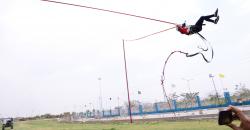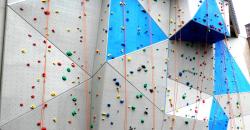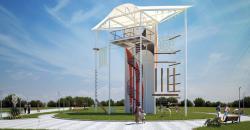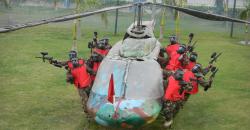- All Categories Display all categories
- Advertisement Ad Agencies, Marketing
- Travel Travel agents, Taxi Services, Flight, Bus Ticketing, Passport & Visa
- Hotels & Restaurants Hotels, Restaurants , Bars , Resorts, Dhaba
- Industry Company, Factory, Work shops, MNC
- Shopping Boutiques, Shop
- Real Estate PG ,Property - Shops, Malls , Flats, House, Rental
- Entertainment Cinema & Theaters, Amusement Parks, Clubs
- Education Schools , Colleges, Institutes, Coaching Centres , Universities, Books
- Medical Hospitals, Doctors, Chemists, Blood Bank, Medical Products
- Lifestyle Lifestyle, fashion, cosmetics, boutique, tailors, shoes
- Services Services, Home Services, Special Services
- Finance Financier, Banks, ATM, Loans, Insurance, Forex , Money Transfer
- Events Banquet Hall , Tent House , Auditorium, Caterers, DJ, Pandit
- Hardware Hardware Tools, Hardware Dealers,
- Listed Products
LOW ROPE COURSE SETUP
Product Code : LRC 1
Brand :
Store Number :
9810614238
(Click to call)
Category: ADVENTURE SETUPS
Price : 800000.00 500000.00
Low ropes courses consist of a series of real and imaginary obstacles designed to challenge teams and individuals to work together to accomplish a task. In Low rope courses elements occur on the ground or only a few feet higher than the ground
Basicaly Low ropes course are for newbie’s and people who have fear of heights.There are various types of courses as well as "spider web" kinds, where the group has to go within and get out while not touching the poles or tree structure. A decent strategy and teamwork can help participants get through this type of rope course. Some low courses have balance beams where team members has to cross while not falloff. The team that has the best time wins.
Low Ropes Elements are a series of cables, ropes, and obstacles arrange between trees or poles, twelve to eighteen inches on top of the bottom, low rope elements present tests of physical strength, stamina, agility, balance, and flexibility, and invite participants to confront such emotional problems as the fear of falling, the fear of failure, and also the fear of losing control. Risk is managed by group members who assume crucial spotting roles. Examples include: Swinging balance beam, Triangle Traverse, Tire Swings, and Mohawk Walk.
The classification of low ropes courses can be further broken into many types of activities:
Cooperative Game, Socialization Activity, and Ice-Breaker: a fun activity designed to reduce inhibitions and break down barriers. These activities are usually not based on a defined task but on a sequence of events. Users are usually placed in positions where they are inspired to undertake new things that may place them outside their traditional comfort zones. Examples include: name games, people to people, raccoon circle...
Group Initiative: problems involving real and imaginary ground-based obstacles (either natural or constructed) that challenge a group to pool their resources and work together to find solutions. Success is achieved only when all members have contributed to the result. Examples include: The Muese, Spider's web, Carpet Maze, crocodile Pit, Whale Watch, Peanut Butter River, Ragging River, T.P. Shuffle, Nitro Crossing, and group Wall
Trust-building games: activities designed to produce members the chance to demonstrate their trust in other members of the group through a series of sequenced actions. Examples include: Willows in the Wind and Trust Fall.









